Understanding the EKG Signal
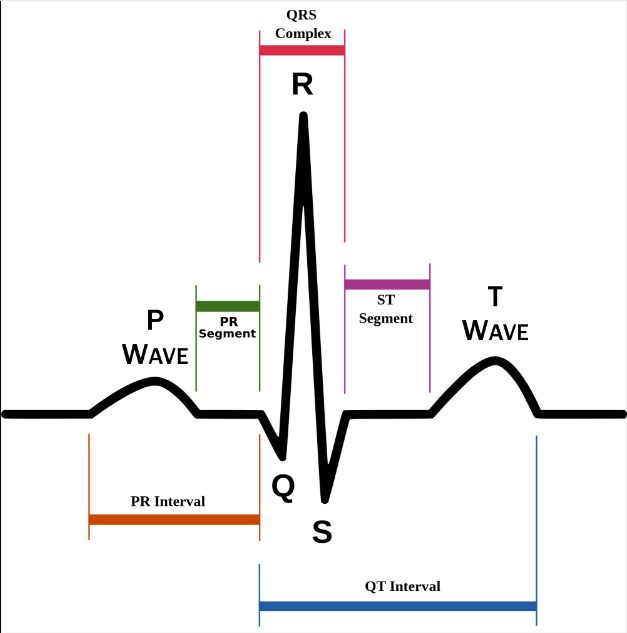
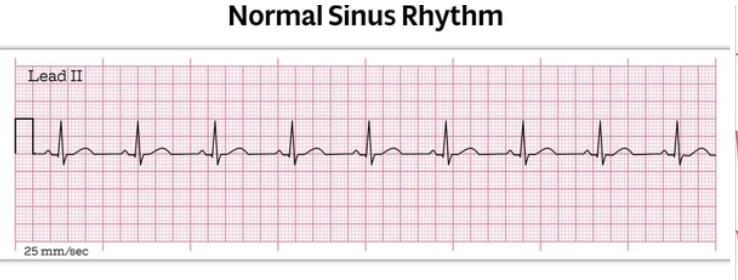
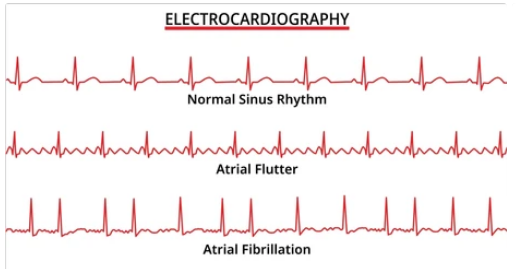
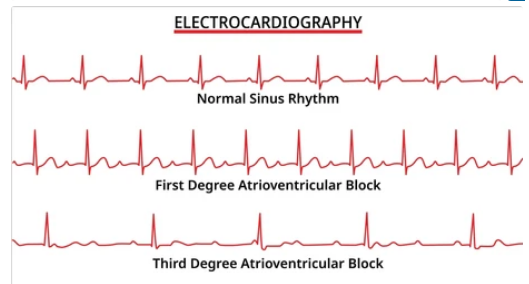
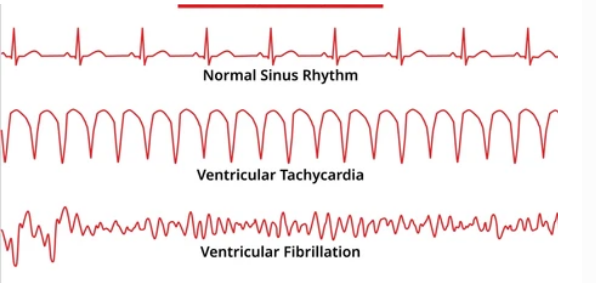
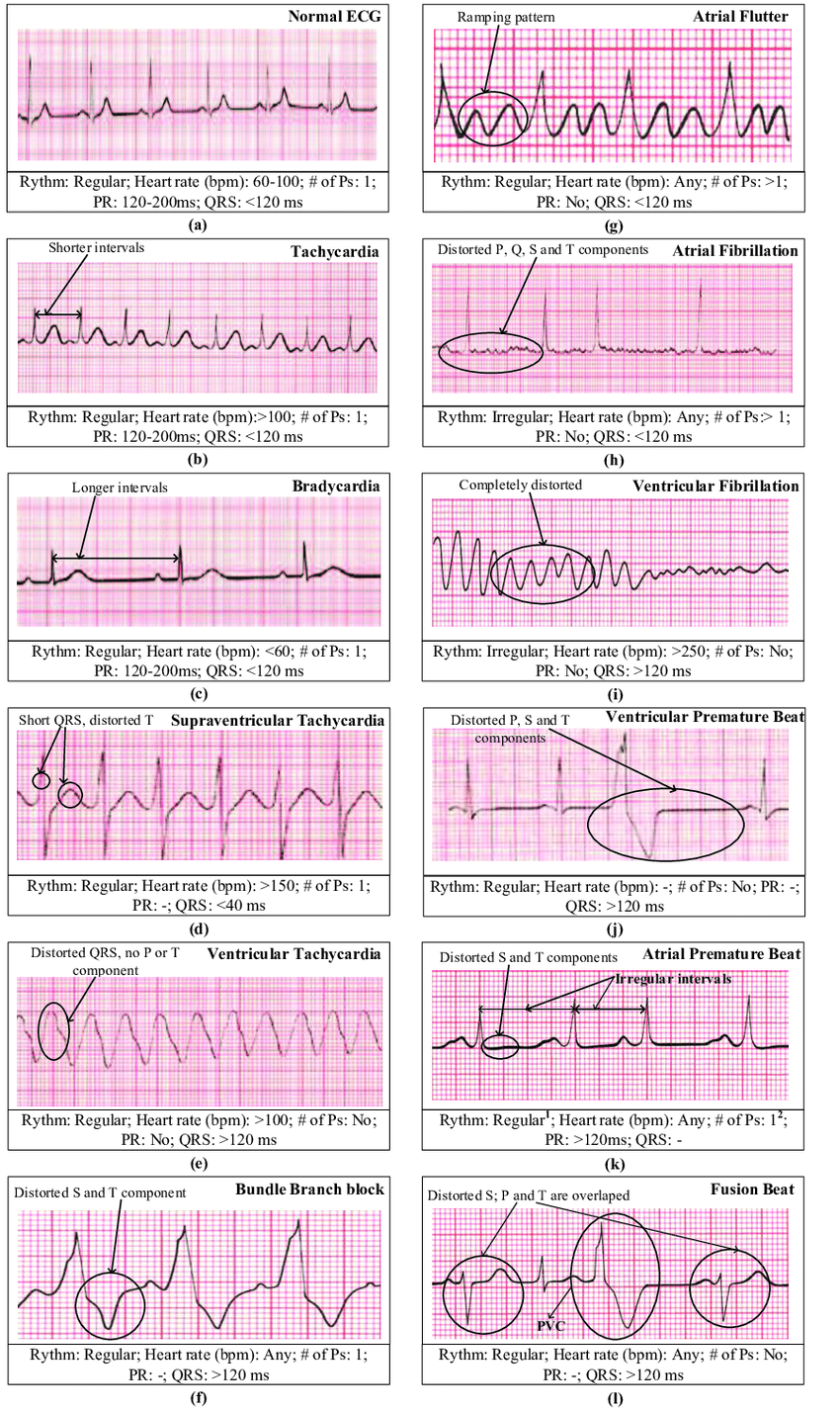
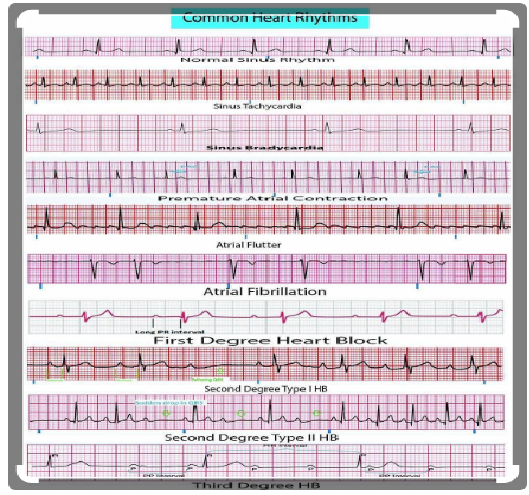
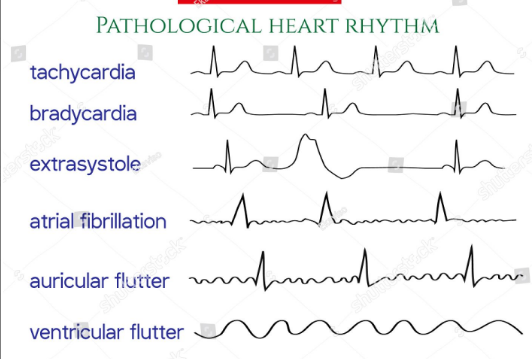

|
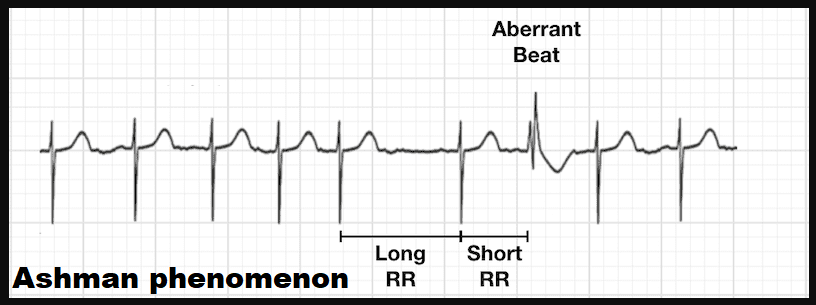
Ashman phenomenon describes an aberrant ventricular conduction, usually of RBBB morphology, which follows a short R-R interval and preceding relatively prolonged R-R interval Typically seen with atrial fibrillation but can also occur with other supraventricular arrhythmias Clinically on its own is asymptomatic and does not require any specific treatment |
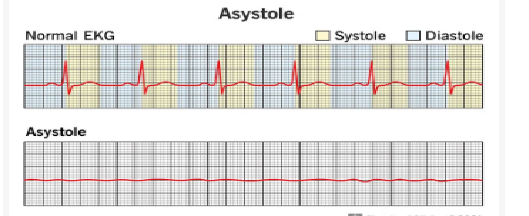 Asystole is when your heart’s electrical system fails entirely, which causes your heart to stop pumping.
Asystole is when your heart’s electrical system fails entirely, which causes your heart to stop pumping.
Different stages of death The main types of death here are: Clinical death. This means you aren’t breathing, your heart isn’t pumping and blood isn’t circulating. This lasts about five minutes on average. Brain death. Once your heart stops and clinical death begins, there’s a short window where your brain cells can survive without a supply of blood and oxygen. After that five-minute window, your brain cells will die. Brain death means your entire brain — including the brainstem, which controls your heartbeat and breathing — stops working permanently.* |
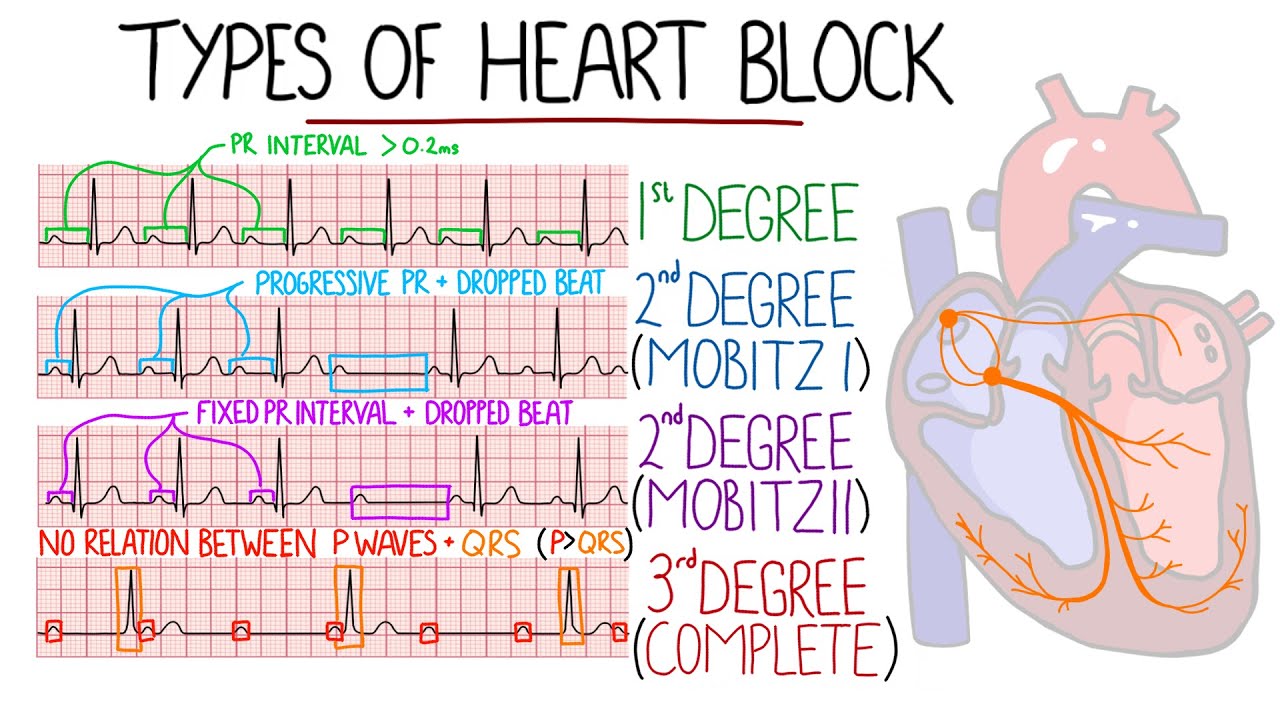
|
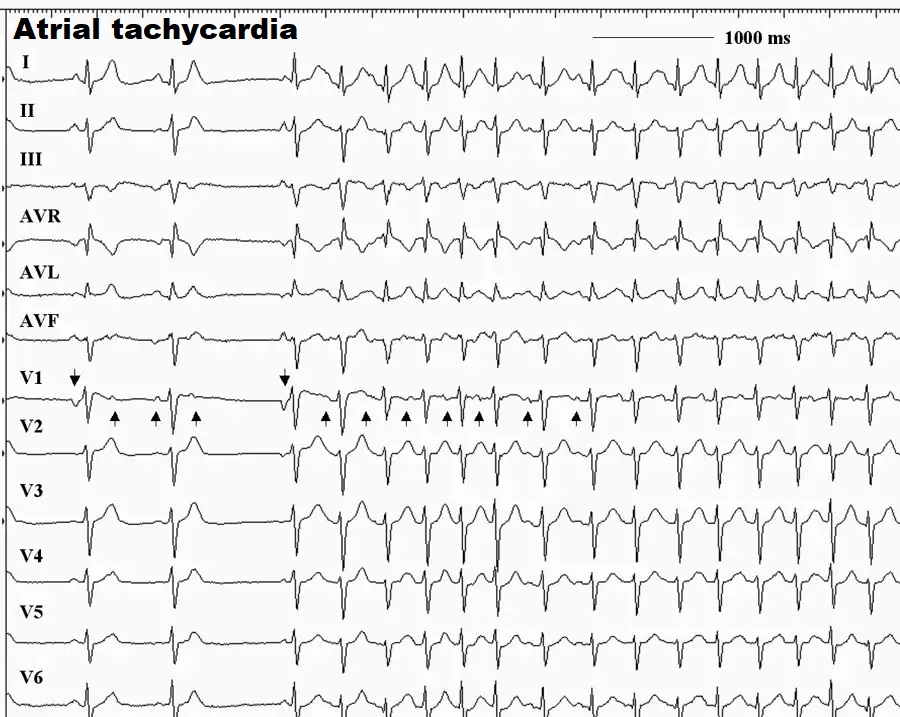 Atrial tachycardia is a supraventricular tachycardia (SVT) that does not require the atrioventricular (AV) junction, accessory pathways, or ventricular tissue for its initiation and maintenance. In addition to individuals with heart diseases, including congenital heart disease, atrial tachycardia may also occur in persons with structurally normal hearts. See the image below. Atrial tachycardia. This 12-lead electrocardiogram Atrial tachycardia. This 12-lead electrocardiogram demonstrates an atrial tachycardia at a rate of approximately 150 beats per minute. Note that the negative P waves in leads III and aVF (upright arrows) are different from the sinus beats (downward arrows). The RP interval exceeds the PR interval during the tachycardia. Note also that the tachycardia persists despite the atrioventricular block. In clinical practice, three major types of atrial tachycardia are seen: focal atrial tachycardia, multifocal atrial tachycardia (MAT), and re-entrant atrial tachycardia. These arrhythmias have unique arrhythmic substrates and characteristics. Focal atrial tachycardia arises from a localized atrial site and is characterized by regular, organized atrial activity with discrete P waves and, typically, an isoelectric segment between P waves. At times, irregularity is seen, especially at onset (“warm-up”) and termination (“warm-down”). Atrial mapping reveals a focal point of origin. MAT is an irregular supraventricular tachycardia characterized by three distinct P-wave morphologies and/or patterns of atrial activation at different rates. The rhythm is always irregular. Re-entrant atrial tachycardia is usually seen after cardiac surgery or catheter ablation with linear lesions that result in islets of scars. Re-entrant atrial tachycardias are usually incessant and may lead to cardiomyopathy. In patients with structurally normal hearts, atrial tachycardia is associated with a low mortality rate. Patients with underlying structural heart disease, congenital heart disease, or lung disease are less likely to be able to tolerate this rhythm disturbance. Treatment of any underlying conditions Catheter ablation to destroy specific patches of heart muscle that are incorrectly producing electrical signals; usually performed at the same time as an electrophysiological study Medications to control the heart rhythm including beta blockers, calcium channel blockers or antiarrhythmic medications such as flecainide, propafenone or amiodarone |
